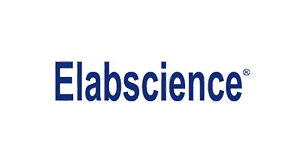Recombinant Human PAH protein (His tag)
Recombinant Human PAH protein (His tag)
Artikelnummer
ELSPDEH101019-500
Verpackungseinheit
500μg
Hersteller
Elabscience Biotechnology
Verfügbarkeit:
wird geladen...
Preis wird geladen...
Special promotion: Enjoy a 10% discount on Elabscience recombinant proteins through September 30, 2025.
Promo code: ELABPQ3
No additional discounts available during this period.
Uniprot: P00439
Accession: P00439
Background: PAH (phenylalanine hydroxylase), also known as PH, belongs to the biopterin-dependent aromatic amino acid hydroxylase family. It contains 1 ACT domain, N-terminal region of PAH is thought to contain allosteric binding sites for phenylalanine and to constitute an "inhibitory" domain that regulates the activity of a catalytic domain in the C-terminal portion of the molecule. In humans, PAH is expressed both in the liver and the kidney, and there is some indication that it may be differentially regulated in these tissues. PAH catalyzes the hydroxylation of the aromatic side-chain of phenylalanine to generate tyrosine. It is one of three members of the pterin-dependent amino acid hydroxylases, a class of monooxygenase that uses tetrahydrobiopterin and a non-heme iron for catalysis. Defects in PAH are the cause of phenylketonuria (PKU). PKU is an autosomal recessive inborn error of phenylalanine metabolism, due to severe phenylalanine hydroxylase deficiency. It is characterized by blood concentrations of phenylalanine persistently above 1200 mumol.
Bio Acitivity: Not validated for activity
Sequence: Ser 2-Lys 452
Purity: > 95% as determined by reducing SDS-PAGE.
Formulation: Lyophilized from sterile PBS, pH 7.4.
Normally 5%-8% trehalose, mannitol and 0.01% Tween 80 are added as protectants before lyophilization.
Please refer to the specific buffer information in the printed manual.
Reconstitution: It is recommended that sterile water be added to the vial to prepare a stock solution of 0.5 mg/mL. Concentration is measured by UV-Vis.
Endotoxin: < 10 EU/mg of the protein as determined by the LAL method.
Calculated MW: 49.5 kDa
Observed MW: 50 kDa
| Artikelnummer | ELSPDEH101019-500 |
|---|---|
| Hersteller | Elabscience Biotechnology |
| Hersteller Artikelnummer | PDEH101019-500 |
| Verpackungseinheit | 500μg |
| Mengeneinheit | STK |
| Produktinformation (PDF) |
|
| MSDS (PDF) |
|

 English
English










